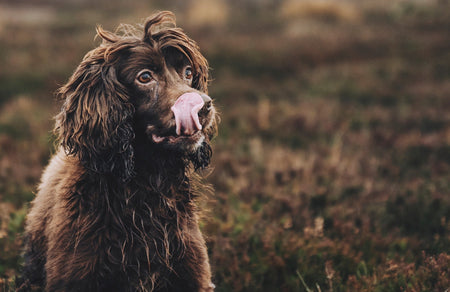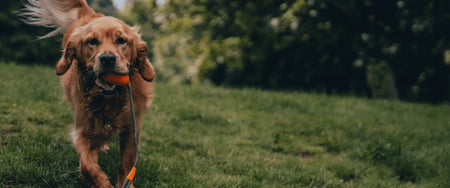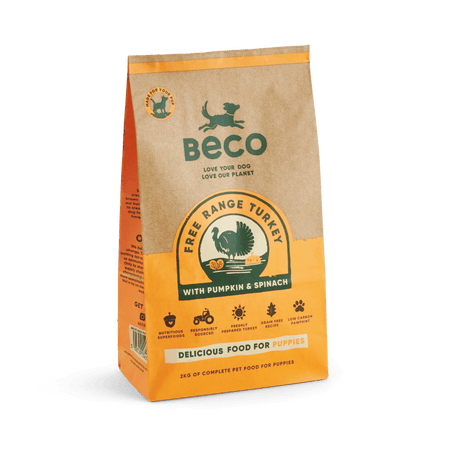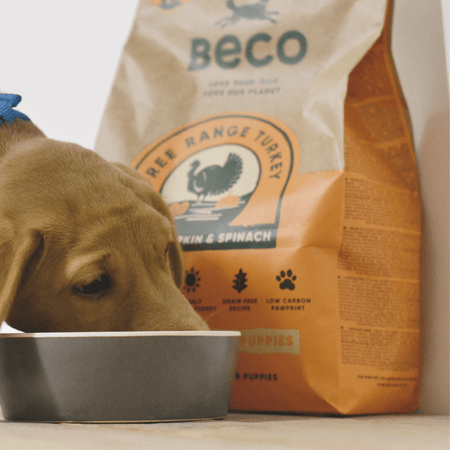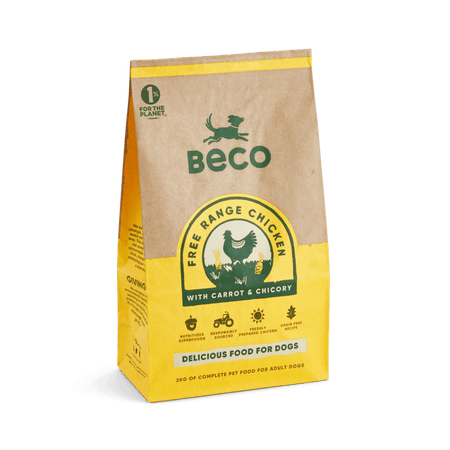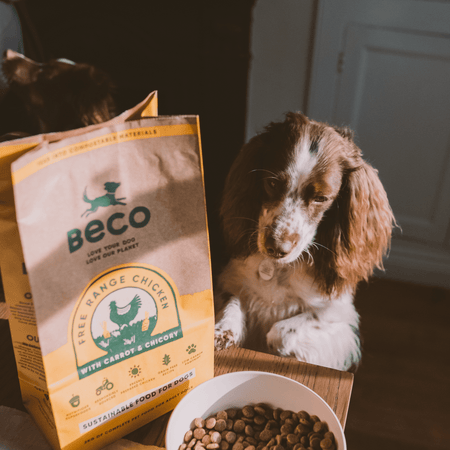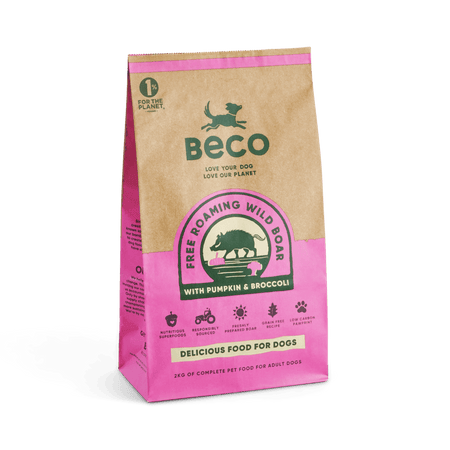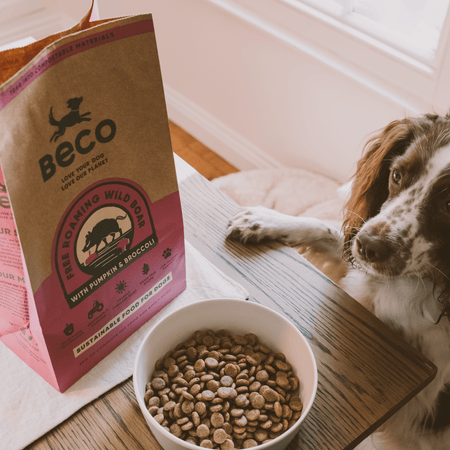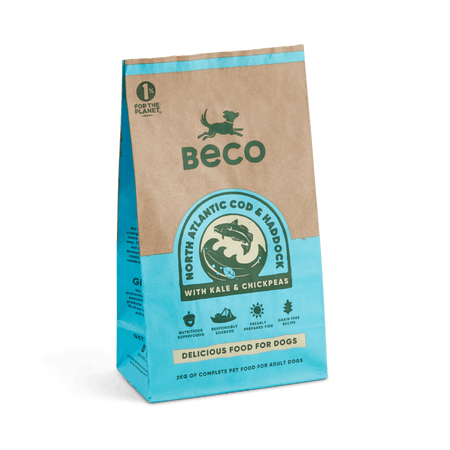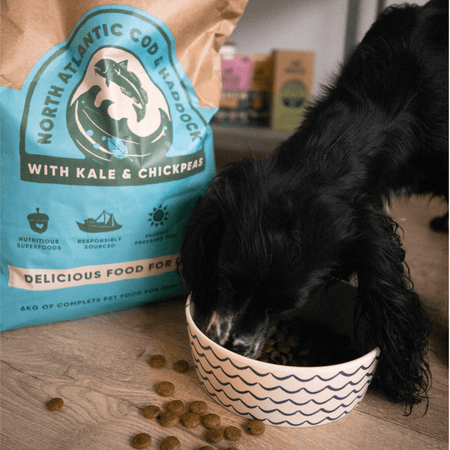Thanks to the growing popularity of gluten-free diets, people – along with their pets – are increasingly ditching the grain.
And this is no bad thing, especially when it comes to dog food. This is because choosing a wholesome and healthy, grain-free food alternative to traditional dog food can help your pup avoid highly processed grains, which are bad for their health.
At the same time, it’s important to remember that most dogs, just like most humans, can eat grains safely. In fact, some grains are good for dogs, namely wholegrains such as oats and brown rice.
Want to know why grains are good for dogs in more detail? Then read on, because we will be running through the benefits of oats and brown rice below. But first, whole grains: what are they and why are they beneficial for dogs?
Wholegrains are unrefined grains. They are grains where the three parts of the grain remain: the bran, the germ, and the endosperm.
In contrast to refined grains, wholegrains are an excellent source of insoluble fibre, which helps keep blood sugar levels normal, and contain important nutrients. Some examples of wholegrains include brown or wild rice, millet and oats.
According to some animal nutrition experts, dogs, like humans, can benefit from eating wholegrains in the following ways:
They can reduce the risks of cancers
Help prevent obesity, kidney disease and diabetes
Protect the heart and reduce high cholesterol levels
Keep blood sugar levels balanced.
Carbohydrates, like wholegrains, are an important part of a dog’s diet as they help boost their energy levels. However, it’s important to use grains sparingly as they are calorie dense and can cause dogs to gain weight.

Are grains bad for dogs?
Grains, as we’ve already mentioned, are not necessarily bad for dogs. That’s because domestic dogs are omnivorous, meaning they’re able to digest starches.
However, a small proportion of dogs do suffer from grain or gluten-intolerances. For these dogs, living a grain-free or gluten-free life (depending on the allergy or intolerance) is an absolute necessity.
Grains can also be bad for dogs when they are cheap and refined. These are the kinds of grains you might find in highly processed dog food where they are used as cheap fillers, often in place of quality protein or vegetables. These offer no nutritional benefit to your dog, and can potentially upset their sensitive stomachs.
Brown rice for dogs
Brown rice is a wholegrain made by removing the hulls from the rice kernel but leaving some of the bran intact.
If you’ve been wondering if dogs can eat brown rice, then the answer is yes, this grain is safe and nutritious for your dog to eat. It is a great source of vitamins, minerals, and fibre, all of which makes it beneficial to your dog’s health.
Now, let’s look at these benefits in more detail:
A source of fibre
Unlike white rice, brown rice retains the outer kernel layers, which makes it a great source of fibre. Fibre supports a healthy pup gut, keeping their poop nice and normal.
Rich in vitamins and minerals
Brown rice is a source of vitamins and minerals that support heart health. These include vitamin B, a vitamin which has a direct impact on your energy levels, brain function, and cell metabolism.
Brown rice also contains vitamin E, magnesium, selenium, and phosphorus (a mineral found in bones).
Easy to digest
This grain is also easily digestible and can be suitable for dogs with sensitive stomachs. Rice is also naturally gluten-free, so is suitable for a dog with a gluten intolerance.
Healthy carbohydrate
Brown rice is an excellent source of slow-release carbohydrates, but a word of warning: they do contain a lot of calories. So, be careful when feeding brown rice to your dog. Make sure large dogs have no more than a quarter of a cup. Smaller breeds should eat around a tablespoon.
Oats for dogs
Oats are another great wholegrain and, like brown rice, are a great source of carbohydrates, fibre, and nutrients. You’ll most often find oats labelled as oatmeal on dog food packaging.
Want to feed your dog oats but wondering, if they are safe for dogs? Well we can tell you that oats are a healthy and safe choice for feeding to your dog – with just a few caveats. We’ll go through these and the benefits below.
Low fat and high in fibre
Oats are high in protein and low in fat. Oats are also full of soluble fibre, which is great for keeping your pup’s poop regular and for managing cholesterol levels.
Balances blood sugar
The low glycaemic (GI) index of oats helps control blood sugar levels.
Contains vitamins and minerals
Oats contain vitamin B, which helps dogs maintain a healthy coat. It also contains linoleic acid, which is a type of omega-6 fatty acid which promotes healthy skin and fur.
Gluten-Free
Provided they are labelled “gluten-free” (meaning they are not processed in a factory with gluten-containing grains), oats are gluten-free and safe for those with intolerances and allergies.
Can dogs have porridge?
Plain porridge is healthy for dogs, but only in moderation, and without any additions of sugar, milk, or other toppings. As a rough guide, you can feed your dog one tablespoon of cooked oatmeal for every 20 pounds of his weight - too much porridge will likely upset their stomach.
The benefits of grains for your dog
Carbohydrates help dogs produce energy, making them an essential part of any healthy, well-balanced doggy diet.
Although dog food containing healthy, starchy vegetables are a great way for dogs to meet their carbohydrate quota, wholegrains, like oats and brown rice, are also an excellent option. Oats and brown rice also contribute vital nutrients, minerals, and fibre.
Despite their many benefits, however, it is important to feed these calorie-dense grains in moderation to dogs. Giving too many of them to your dog can contribute to obesity and a growth of the wrong kind of bacteria in their gut, both of which can play havoc with their health.
